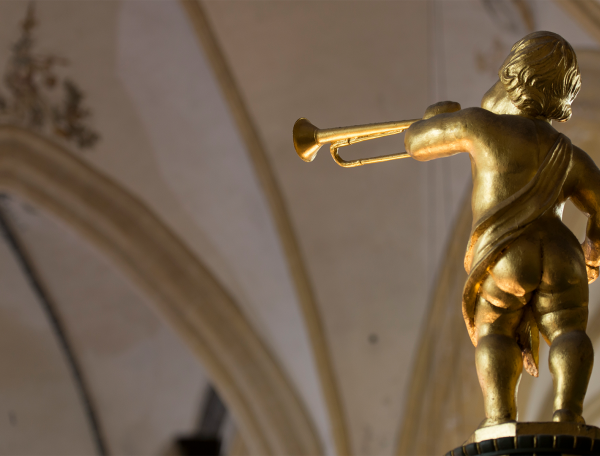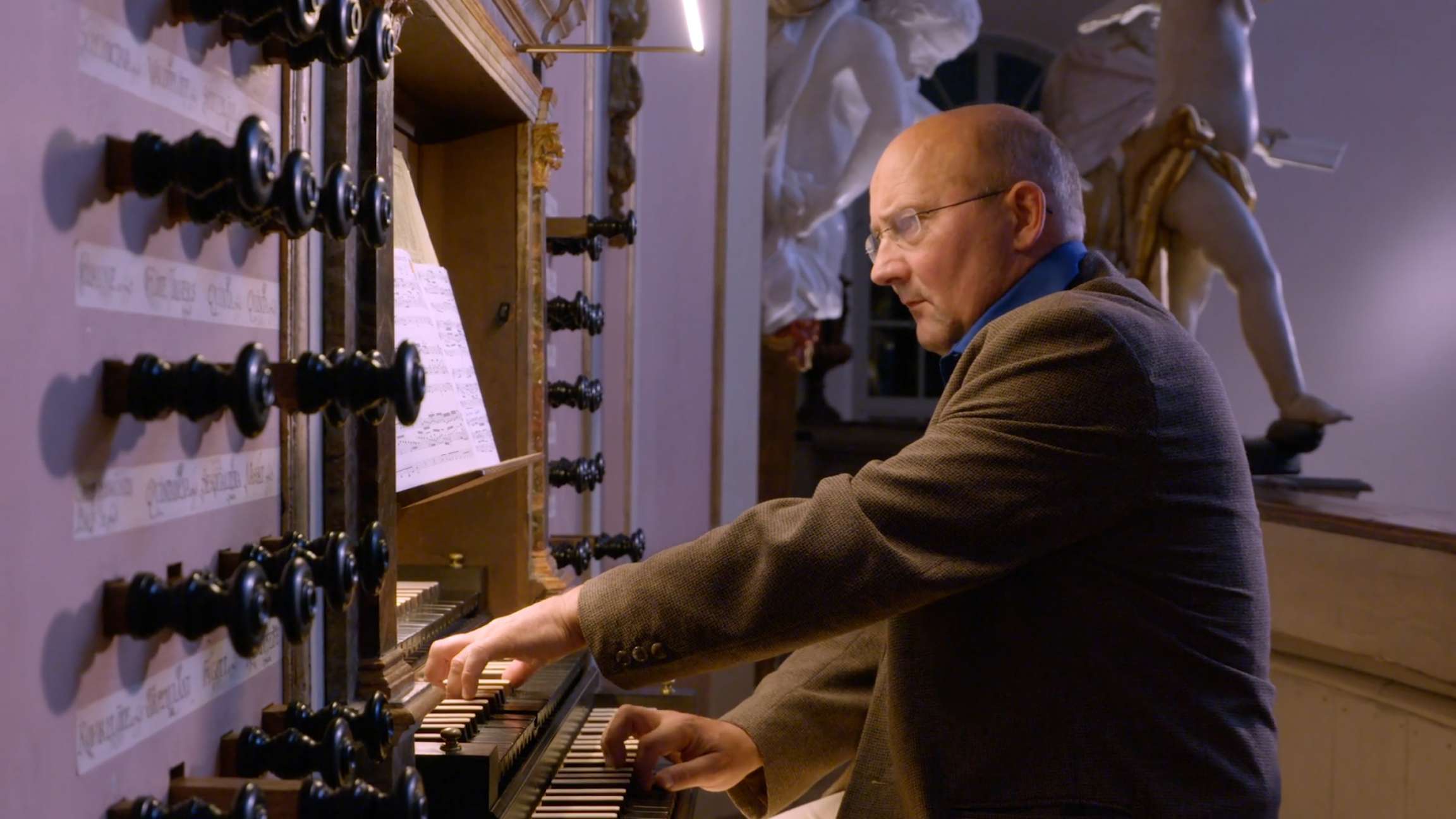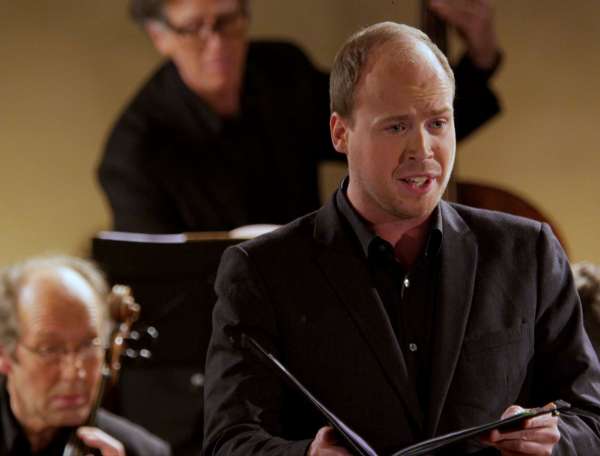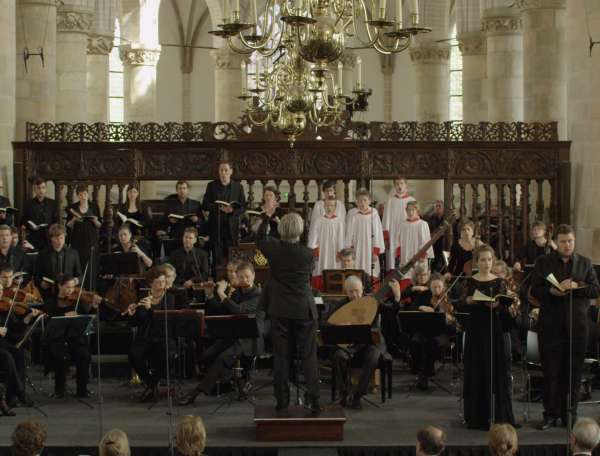

O Mensch, bewein dein Sünde gross
BWV 622 performed by Erwin Wiersinga
Stiftskirche St. Georg, Goslar-Grauhof
Behind the music
Plaster on the wound
Bach eases the pain, while putting salt on the wound
An organ work as poignant and moving as this chorale prelude for the Passion is a rarity, even for Bach. We are all reminded of our responsibility, which we have hopelessly renounced, as we know. O ye faithful of all lands, take shame! Though Christ saved us, he had to die a horrible death in order to do so.
The unusually long chorale melody, which slowly unfolds before the listener, comes from a hymn from 1525. Extreme austerity would be fitting for the stern tone of the words, but instead Bach indulges in a wealth of ornamentation. It is as if he wants to say: it’s true that we’re a worthless bunch, but we can’t really help it. So rather than giving us a painful clip around the ears, he puts a plaster on the wound.
However, we don’t get away that easily. By putting the simple chorale melody in such comforting wrappings, Bach takes the soul even more by surprise with his unexpected harmonic twists and turns. And that was precisely his intention. In his collection of chorale preludes Harmonische Seelenlust from 1733, organist Georg Friedrich Kaufman says it in so many words: the aim of playing chorale preludes in church is to put the congregation in the right mood, so that they will then sing the chorale with even greater devotion. In 1746, Bach’s pupil Ziegler confirmed that that was exactly what he had learned from Bach: “As for playing chorales, my teacher, Kapellmeister Bach, taught me not to play the songs just like that, but in keeping with the meaning (Affect) of the words”.
So when, after a chromatic twist, Bach reaches a truly remarkable harmony in the very last bar of O Mensch, bewein dein Sünde gross, it is not without reason. In this anyway slow work, he reduces the tempo here to adagissimo, so that it becomes clear how terribly long Christ had to hang on that tortuous cross and just how painful it was. It is easy to imagine that the congregation had an enormous lump in their throat when they started singing this chorale.
Orgelbüchlein, BWV 599-644
During his time as court organist at Weimar (1708-1714), Bach already started compiling his first collection of chorale arrangements and chorale preludes (compositions based on Lutheran hymns). They were intended to be used in church services, and the preludes were an introduction to congregational singing. According to the list of contents in Bach’s manuscript, it was supposed to have been a collection of 164 compositions, but in the end it did not exceed 46 (BWV 599-644). The order, combined with the limited length of the pieces, indicates that Bach was planning to compile a complete cycle of chorale arrangements. Later, in his period at Köthen, he gave the collection a title page, which reads: ‘Orgel-Büchlein, Worinne einem anfahenden Organisten Anleitung gegeben wird, auff allerhand Arth einen Choral durchzuführen…’ (‘Little organ book, in which a beginner organist is taught to arrange a chorale in all sorts of ways...’). So at the time, he intended the collection just as a teaching manual, maybe to present on his application in 1722 for the post of cantor at the Thomasschule in Leipzig, which was an important teaching position. The pupils must have had a hard time of it, as the preludes contain the complete range of baroque keyboard techniques in a nutshell.
- BWV
- 622
- Title
- O Mensch, bewein dein Sünde gross
- Instrument
- organ
- Genre
- organ works
- Serie
- Orgelbüchlein
- Year
- ca. 1708-1717
- City
- Weimar
- Special notes
- Included in a manuscript with 45 other chorale preludes. It was only in 1722, in Köthen, that the manuscript was given a title page stating Orgelbüchlein.
Extra videos
Vocal texts
Original
Translation
Credits
-
- Release date
- 14 April 2017
-
- Date
- 24 August 2015
-
- Location
- Stiftskirche St. Georg, Goslar-Grauhof
-
- Organist
- Erwin Wiersinga
-
- Organ
- Christoph Treutmann, 1731
-
- Director and editor
- Onno van Ameijde
-
- Music recording, edit and mix
- Holger Schlegel
-
- Camera
- Maarten van Rossem, Onno van Ameijde
-
- Interview
- Onno van Ameijde
-
- Producer
- Jessie Verbrugh
Discover
Help us to complete All of Bach
There are still many recordings to be made before the whole of Bach’s oeuvre is online. And we can’t complete the task without the financial support of our patrons. Please help us to complete the musical heritage of Bach, by supporting us with a donation!

